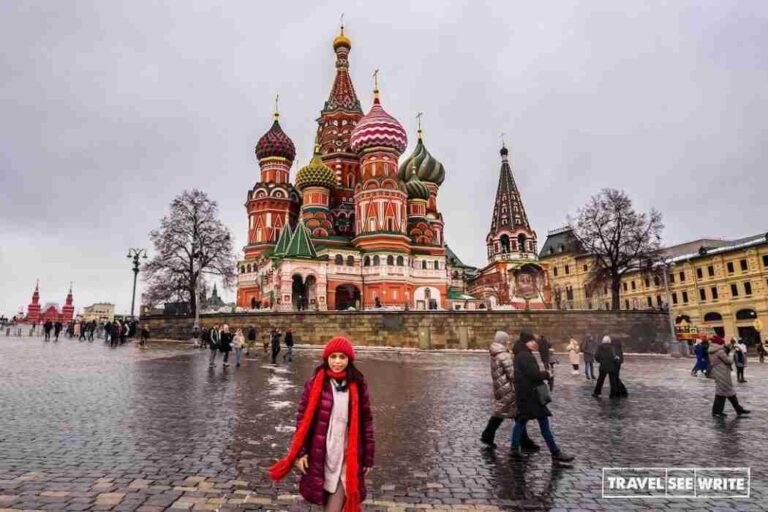Heightened Tensions Mark Russia’s Victory day Amid Ongoing Conflict with Ukraine
This year, the annual Victory Day celebrations in Russia have taken on a new significance as tensions between Moscow and Kyiv reach alarming levels. President Vladimir Putin led an elaborate ceremony in Red Square, showcasing military strength while commemorating the Soviet Union’s victory over Nazi Germany. In stark contrast, Ukrainian officials took this opportunity to issue strong warnings and accusations against their Russian counterparts. Al Jazeera’s recent analysis explores the heated exchanges between these two capitals,highlighting how the symbolism of Victory Day is being manipulated within the context of the ongoing war in Ukraine. Both nations are utilizing this day to reinforce their respective narratives, raising serious concerns about regional stability and international relations.
Tensions and Accusations During Victory Day Celebrations
The recent festivities in moscow have sparked a new wave of accusations from both Russian and Ukrainian leaders as hostilities continue to rise. President Putin framed the conflict as a battle against fascism, claiming that Western nations are fueling aggression towards Russia. In response, Ukrainian officials categorically dismissed these assertions, arguing that it is Russia itself that is instigating violence and chaos both within ukraine and beyond its borders. This clash of narratives highlights an ongoing propaganda war where each side aims to rally domestic and international support.
Amidst grand military parades filled with nationalist fervor, both capitals exchanged pointed remarks regarding their respective positions on the conflict. Kyiv accused Moscow of attempting to divert attention from its invasion’s severe consequences—loss of life and economic distress—while Moscow labeled Ukraine as an aggressor responsible for wartime atrocities against Russian-speaking communities. This exchange underscores deepening mistrust between them while leaving little room for diplomatic solutions.
- Divergent Historical Perspectives: Each nation interprets World War II’s legacy differently, which exacerbates current tensions.
- Conflicting Casualty Reports: Discrepancies in reported military and civilian casualties further fuel discord.
- Shifting International Alliances: While Russia strengthens ties with countries like China, Ukraine seeks support from NATO and EU allies.
Military Posturing & Propaganda: A Regional Security Analysis
The escalating situation has prompted both sides to intensify their military posturing as a means of demonstrating strength amidst rising tensions. The grand display during Victory Day not only showcased military capabilities but also served as a strategic propaganda effort aimed at consolidating domestic support while projecting national unity amid ongoing strife. High-profile exhibitions featuring advanced weaponry were carefully orchestrated to convey messages intended for both national citizens and global observers alike—reinforcing Russia’s commitment to its regional objectives despite significant challenges at home.
On the other hand, Ukraine has effectively countered these militaristic displays by questioning their actual combat readiness through social media campaigns focused on resilience rather than sheer firepower alone. Key elements of this messaging strategy include:
- Civilian Impact Awareness: Emphasizing humanitarian crises resulting from Russian actions.
- <strong.Global Solidarity Efforts: Highlighting alliances formed with Western nations for military aid.
- <strong.Historical Contextualization: Framing current struggles within narratives advocating sovereignty and democratic principles.
| Main Metrics | Ukraine’s Approach | Russia’s Strategy |
|---|---|---|
| Narrative Focus during National Celebrations | Heroic Resistance | Might Display |
Strategies for Diplomatic engagement: Easing Hostilities in Eastern Europe
The intensifying conflict necessitates renewed diplomatic efforts aimed at reducing tensions between Moscow and Kyiv.
Pivotal engagement strategies should include:
- Open Interaction Channels: Establishing reliable lines between Russian & Ukrainian officials can help avert misunderstandings leading up escalatory actions .
- Neutral Mediation: Involving impartial countries or organizations like United Nations or OSCE could facilitate constructive dialogue fostering mutual trust .
- Confidence-Building Initiatives : Implementing measures such as humanitarian cooperation , joint economic projects can promote goodwill laying groundwork sustained engagement .
Additionally , regional partners must actively contribute towards creating stable environments .
Economic incentives could play crucial roles encouraging cooperation :
| Strategic Approaches | Potential Outcomes | |
|---|---|---|
| Encouraging Trade Agreements | Enhances economic interdependence reduces likelihood armed conflicts . Â Â |
Conclusion: Navigating Escalating Tensions Between Moscow And Kyiv ÂThe sharp exchange of accusations during this year’s Victory Day celebrations illustrates escalating hostilities between Moscow & Kyiv amidst heightened geopolitical stakes surrounding war-torn regions . contrasting narratives reflect not only immediate conflicts but broader implications affecting global relations moving forward into uncertain futures ahead ; As developments unfold , observers worldwide will closely monitor how evolving dynamics shape geopolitical landscapes . |




